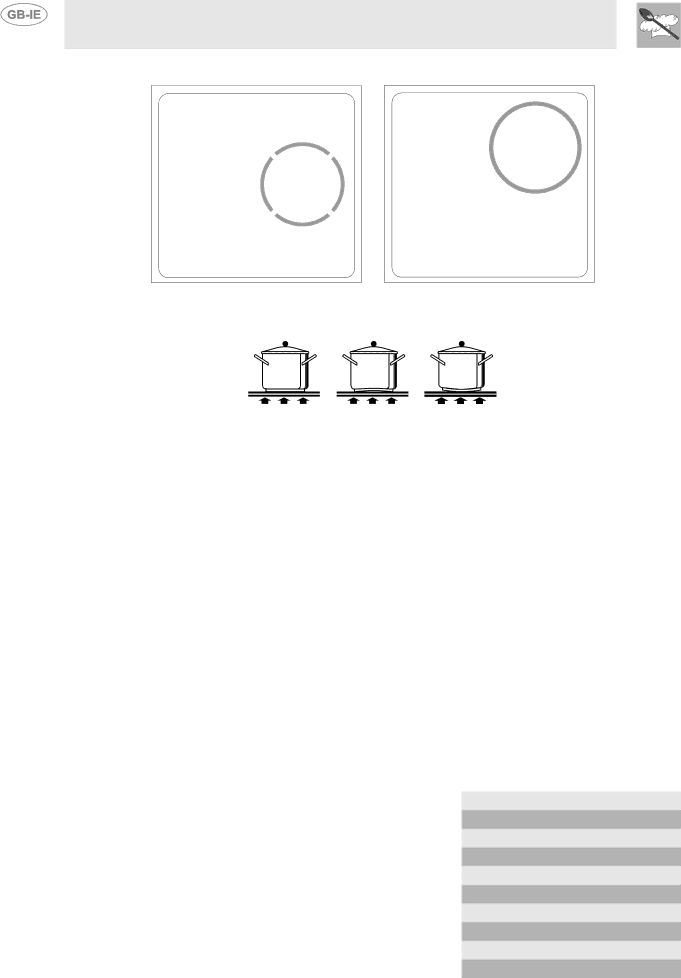
Instructions for the User
Make sure you only use containers intended for induction cooking, with a thick and completely flat bottom or, if not available, containers without a curved bottom (concave or convex).
YES NO NO
12.5.1 Cookware detector signal
Every cooking zone has a “cookware detector” device that starts cooking only when there is a container with the appropriate caracteristics on the burner and it is positioned correctly. If the container is not well positioned or isn't made of the correct material and still tries to activate the burner, after a few seconds
from the burner's activation, the ![]() symbol will appear on the display.
symbol will appear on the display.
12.5.2 Residual heat
Each cooking zone is equipped with a residual heat warning device. After any burner is switched off, a
flashing ![]() may appear on the front zone. This warns that the cooking zone concerned is still very hot.
may appear on the front zone. This warns that the cooking zone concerned is still very hot.
Cooking can be restarted even while the ![]() is flashing.
is flashing.
12.5.3 Cooking hob lock-out
When not in use, the hob can be “locked” from being accidently turned on by children. With the burners turned off, turn the knobs of burners 2 and 4 simultaneously until “5 L” appears on the power display. Then release the knob. To unlock it repeat the same operation: The burners' displays will show a 0 that will indicate that the burners' lock has been deactivated.
12.5.4 Circuit board thermal protection
The appliance is provided with a device that constantly measures the temperature of the electronic circuit board.
If the temperature surpasses certain values, the device will activate certain functions to lower the temperature and allow the
Below is a table with the operations that are activated automatically and the relative start temperature:
Operation | Activating temperature |
fan turns on at low speed | 50 °C |
fan turns on at high speed | 60 °C |
fan returns to low speed | 55 °C |
fan turns off | 45 °C |
Operating power reduced from Power to 9 | 76 °C |
Reduction of power of a point for every cooking zone | 85 °C |
Turning off all the cooking zones | 90 °C |
Switching on again of the cooking zones at reduced power | 85 °C |
Normal operation of all the cooking zones | 80 °C |
|
|
Every intervention of this type will be identified on the cooking hob with a light on the power display.
52